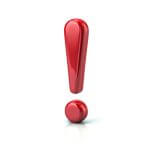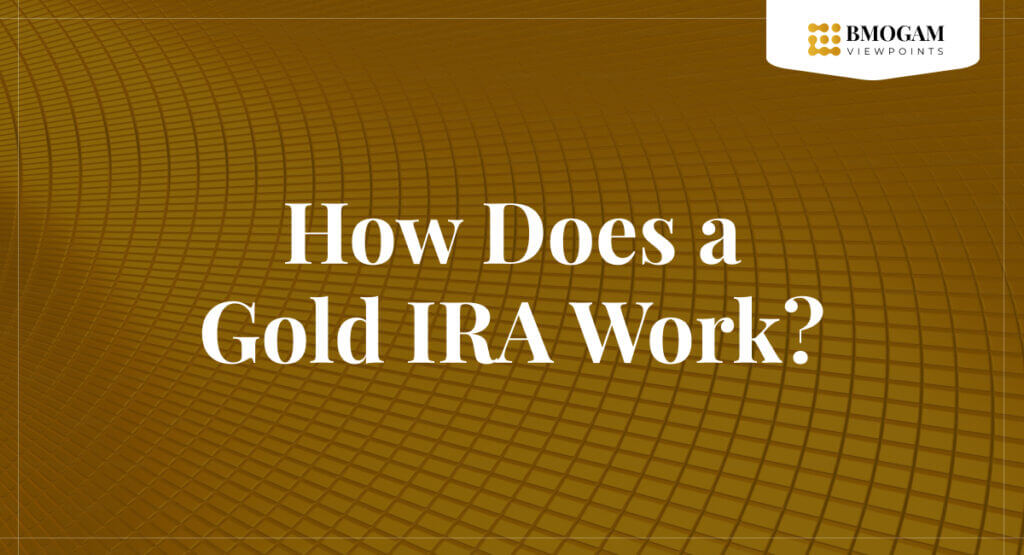Disclaimer: We are reader supported. We may be compensated from the links in this post, if you use products or services based on our expert recommendations. Please read our Advertising Disclosure.
The realm of coin collecting and investing is as vast as it is intriguing. At the heart of this expansive world, two distinct types of coins consistently emerge as subjects of intense debate: bullion and proof coins. Each type boasts its unique characteristics, making them prized possessions for different reasons among enthusiasts and investors alike.
Bullion coins, primarily minted for their precious metal content, are valued based on the fluctuating prices of metals like gold, silver, or platinum. They offer a tangible connection to the world of precious metals, often serving as a hedge against economic uncertainties.
On the other hand, proof coins represent the pinnacle of coin craftsmanship. Produced with meticulous care, these coins undergo a specialized minting process, resulting in a finish that's nothing short of artistry.
Their intricate designs, combined with their mirror-like backgrounds, make them a favorite among collectors who appreciate the finer details in coinage.
Before we get started with this review:
We understand how difficult it is to pick a company that you can trust with your hard earned savings. That's why we create informative and useful information to give you as much knowledge as possible to make the right decision.

We created a list of our highest recommended investment companies, to make comparing and choosing the company best suited to your needs as easy as possible.
Or...
Get a FREE Gold Investing Packet from our #1 recommendation:
Protect Your Wealth & Tax and Penalty Free!
But the question remains: when pitted against each other, which emerges as the superior choice? Is it the tangible value of bullion coins or the unparalleled craftsmanship of proof coins?
Drawing from our extensive research and experience, we aim to delve deep into this debate, offering insights and comparisons that will guide you towards an informed decision.
Understanding the Basics of Coins
Coins have been an integral part of human civilization for thousands of years, serving various purposes from being a medium of exchange to representing a form of art. Historically, coins were not just metal pieces used for trade; they were a reflection of the culture, politics, and economy of the time.
The earliest coins were made of a blend of gold and silver called electrum and were not standardized in weight. These coins, primarily from the kingdom of Lydia, often bore images of symbolic animals and did not have any inscriptions.
Over time, as the concept of coinage spread, cities began producing coins with images of their patron gods or goddesses, and sometimes even their rulers.

The art of coin-making, known as numismatics, evolved over time. Coins were initially hand-struck; however, as civilizations advanced, so did their methods of coin production.
The Greeks, for instance, were known for their high-quality silver and gold coins, which often featured intricate designs and depictions of legends and myths. For example, coins from the city of Syracuse are considered some of the most beautifully designed coins from the ancient world.
Coins also played a significant role in the spread of culture and ideas. As empires expanded and conquered new territories, they introduced their coinage systems to these regions.
The Achaemenid Empire, after conquering Lydia, adopted the Lydian coinage system and further introduced it to regions like India, leading to the development of unique coinage systems in these areas.
What Are Bullion Coins?
Bullion coins, primarily minted for their precious metal content, have been a favorite among investors for centuries. These coins are not just pieces of metal; they are a reflection of a country's economy and its natural resources.
For instance, the Canadian Gold Maple Leaf, minted by Canada, emphasizes the country's abundant natural resources. Similarly, the American Gold Eagle represents the United States' economic prowess.

The value of bullion coins is not just in their metal content but also in their history and the trust that people place in them.
For example, coins minted by renowned government mints carry a mark of authenticity and trustworthiness, making them more valuable than similar coins minted by lesser-known mints.
Additionally, the designs on bullion coins, although consistent, often carry deep historical or cultural significance. The British sovereign, for instance, features a depiction of St. George slaying a dragon, a legend deeply rooted in British folklore.
What Are Proof Coins?
Proof coins are the epitome of craftsmanship in the world of coinage. While they might contain precious metals like their bullion counterparts, their real value lies in their intricate designs, rarity, and the special minting process they undergo.
This process involves striking the coin multiple times to ensure a detailed, high-relief design with a mirror-like background. The result is a coin that is not just a medium of exchange but a piece of art.

Collectors and enthusiasts often seek proof coins, not for their metal content, but for their beauty and the stories they tell. For instance, a proof coin depicting a historical event can serve as a reminder of that time, making it a cherished possession.
Moreover, the packaging of proof coins is also special. They are often sold in protective cases with certificates of authenticity, ensuring that the coin remains untarnished and retains its value over time.
Comparing the Investment Potential
When we talk about investments, it's crucial to understand that every investment vehicle has its unique set of advantages and challenges. The same holds true for bullion and proof coins.
Bullion coins, primarily minted for their metal content, are directly tied to the metal market. This means that their value fluctuates based on the global prices of metals like gold, silver, or platinum.
For investors, this presents a tangible asset that can serve as a hedge against economic uncertainties, such as inflation or downturns.
During economic recessions, investors often flock to tangible assets like gold, driving up its demand and, consequently, its price. This makes bullion coins a potentially volatile yet rewarding investment.
However, it's essential to note that the potential of bullion coins is typically tied exclusively to the weight of their precious metal content.
Proof coins, on the other hand, while also having an intrinsic metal value, bring additional factors into the investment equation. Their value isn't just determined by the metal they contain but also by their rarity, design, and historical significance.
For instance, the U.S. Mint struck nearly 1.5 million bullion American Gold Eagle coins in 1998, but the Proof Gold Eagles numbered just 26,000. This scarcity can significantly impact a proof coin's value.
We found that while bullion coins might be more liquid due to their direct tie to metal prices, proof coins, prized for their scarcity, can offer insulation from spot price variations and potentially greater profit potential.
Moreover, both bullion and proof coins can be included in diversified investment portfolios. Financial advisors often emphasize diversification as a means to reduce overall risk.
By having both bullion and proof coins, investors can diversify within the precious metals asset class, benefiting from the unique attributes of each coin type.
The Aesthetic and Historical Value
Coins are not just pieces of metal; they are a reflection of history, culture, and artistry. While bullion coins are primarily valued for their metal content, they often carry designs that resonate with a country's heritage or significant events.
The American Gold Eagle bullion coin features a design inspired by the Saint-Gaudens Double Eagle, a coin that was minted from 1907 to 1933 and is considered by many to be one of the most beautiful U.S. coins ever produced.
However, when it comes to sheer artistry and historical significance, proof coins stand out. These coins undergo a specialized minting process, starting with highly polished planchets or blanks.
They are then hand-loaded into a coin press and struck multiple times with specially treated dies.
This meticulous process results in coins with a high level of detail, frosted images, and mirror-like backgrounds. Many proof coins commemorate historical events, such as significant battles, anniversaries, or milestones in a nation's history.
Their designs are often intricate, capturing the essence of the event they represent.
Proof coins are like miniature canvases, where the mint showcases its craftsmanship and artistry. They capture moments in time, making them more than just an investment; they are a piece of history.
Through our practical knowledge, we've observed that the depth, detail, and story behind every proof coin make them a cherished item for collectors and history enthusiasts alike. Collecting these coins isn't just about financial gain; it's about owning a piece of art that tells a story of its own.
Factors to Consider When Buying
When venturing into the world of coin collecting or investing, it's crucial to be well-informed to make the best decisions. Whether you're gravitating towards bullion or proof coins, several factors should guide your purchase:
Authenticity
The genuineness of a coin is paramount. Counterfeit coins can be prevalent in the market, especially when dealing with rare or high-value items. Always ensure that you're purchasing from a reputable dealer or source.
Some coins come with certificates of authenticity, which can provide added assurance of their legitimacy.
Condition
The state or quality of a coin plays a significant role in determining its value. Coins are graded on a scale, with terms like "Mint State" or "Proof" indicating coins in pristine condition. Any wear, tear, scratches, or blemishes can reduce a coin's value.
It's essential to understand coin grading standards and, if possible, have high-value coins professionally graded.
Rarity
Limited edition or hard-to-find coins can command higher prices. For instance, certain proof coins are issued in limited quantities with special editions and commemorative themes.
Their scarcity can make them particularly appealing to collectors, driving up their value.
Market Trends
The value of coins, especially bullion coins, can be influenced by global market conditions. For bullion coins, their value is often tied directly to the spot price of the metal they contain.
Staying updated with current market conditions and trends can help you gauge when to buy or sell.
Purpose of Purchase
Are you buying for investment or as a collector? Bullion coins are more straightforward for those looking to invest in the intrinsic value of the metal. In contrast, proof coins, with their artistic designs and limited mintage, appeal more to collectors.
Liquidity
Consider how easy it will be to sell the coin in the future. Bullion coins, tied to metal prices, often offer more liquidity. In contrast, while proof coins can appreciate in value due to their collectability, selling them might require finding the right buyer, which can take time.
Premium Over Spot
Especially relevant for bullion coins, this refers to the additional cost over the metal's spot price. This premium includes minting costs, distribution expenses, and dealer profit margins. Understanding and comparing these premiums can ensure you're getting a fair deal.
Incorporating these factors into your decision-making process can lead to a more satisfying and fruitful coin-buying experience. As always, conducting thorough research, consulting with experts in the field, and understanding your personal goals and risk tolerance are essential steps in the journey of coin collecting and investing.
Conclusion: Making the right choice for you
The debate between bullion and proof coins boils down to individual preferences and goals. If you're looking for a straightforward investment tied to the metal market, bullion coins might be your best bet.
However, if you value artistry, history, and the joy of collecting, proof coins offer a world of wonder.
Remember, coin collecting and investing is a journey. Whether you choose bullion, proof, or both, the world of coins offers a rich tapestry of history, art, and financial potential. Dive in, continue your research, and enjoy the journey.
You can get a Free Gold Investors Guide from our top gold and precious metals company recommendation by clicking the link above or you can read our article of the top companies we reviewed this year:
>> CLICK HERE to read our list of the Top Gold Investing Companies. <<

I started BMOGAM Viewpoints as a way to compile all my views on investing in one place. I own my home, have some real estate, and own a few stocks like most people, but what really drives my interest in investing is I have a strong love of precious metals, especially gold.



